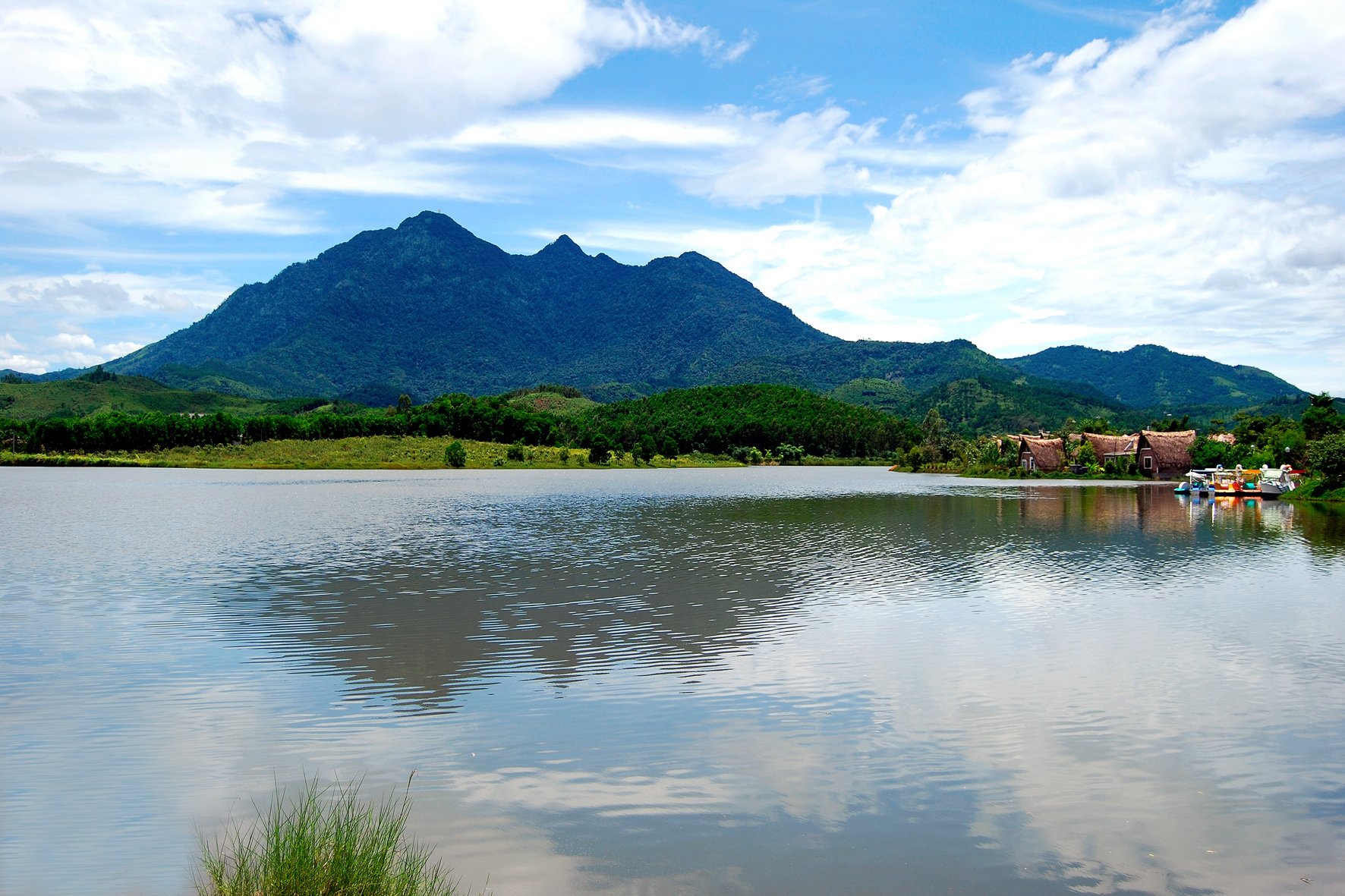
Ba Vi National Park (Hanoi) – Source: https://vuonquocgiabavi.com.vn/
On January 16, 1991, the Chairman of the Council of Ministers (now the Government) issued Decision No. 17/CT approving the economic justification for the establishment of Ba Vi national forbidden forest.
On December 18, 1991, the Chairman of the Council of Ministers (now the Government) issued Decision No. 407/CT on renaming Ba Vi National Forest to Ba Vi National Park.
In May 2003, the Government decided to expand the planning of Ba Vi National Park to Hoa Binh province. Currently, the total area of the park is 10,814.6 hectares, located in the administrative boundaries of 16 communes in 3 districts of Hanoi and 2 districts of Hoa Binh province, 60 km west of the capital city center.
Ba Vi National Park has geographical coordinates: From 20 o 55′ to 21 o 07′ north latitude From 105 o 16′ to 105 o 25′ east longitude. Including 3 sub-zones: That is the strictly protected sub-zone above level 400 and the ecological restoration sub-zone below level 400, the administrative service sub-zone. Buffer zone: The buffer zone of Ba Vi National Park has an area of over 35,000 hectares in the territory of 16 mountainous communes of Ba Vi, Thach That, Quoc Oai districts of Hanoi and Luong Son and Ky Son of Hoa Binh province.
Biodiversity values: Ba Vi National Park has 3 forest types: Subtropical evergreen closed humid forests; Subtropical evergreen mixed broadleaf and coniferous forests and lowland tropical evergreen broadleaf forests. Ba Vi Mountain has 2 high altitude belts, so the flora here is quite rich and diverse, with 1,209 species of higher plants belonging to 99 families and 472 genera recorded. Many rare species of trees such as Calocedrus marcrolepis , Podocarpus nerrifolius , Sen mat, giổi lá Bạc, Quyết thân Gỗ, Bát Giác Liên. In the National Park, 503 species of medicinal plants have also been recorded.
According to the latest supplementary survey results, the Vertebrate Fauna (VFA) in Ba Vi National Park has 342 species. Of which, there are 65 mammal species, 169 bird species, 30 reptile species, and 27 amphibian species. The endemic elements of the VFA in Ba Vi are in the Reptile and Amphibian classes. These are the Ba Vi Eared Lizard ( Tropidophorus baviensis ), the Striped Frog ( Chaparana delacouri ). The group of rare animals in Ba Vi National Park has 66 species, most of which are small or medium-sized VFA. Rare species include Owston’s Civet ( Chrotogale owstoni ), Binturong ( Artictis binturong ), and Prionodon pardicolor ; Leopard ( Felis temmincki ), Goat ( Capricornis sumatraensis ), Flying Squirrel ( Petaurista petaurista )… White Pheasant ( Lophura nycthemera ), Blue-rumped Babbler ( Garrulax chinensis )… and narrow endemic species currently present in Ba Vi National Park.
According to the results of the National Park’s thematic survey on insects, 552 species of insects belonging to 364 genera, 65 families, and 14 orders were discovered. Of these, 7 species are listed in the Vietnam Red Book, such as the common green mantis ( Mantis religiosa ); Lethocerus indicus ; Attacus atlas ; Actias selene ; Lamproptera curius; Troides helena ; Graphium antiphates .
The insect system in the Garden has created richness, species diversity and highlighted the natural value of the Garden.
Tourism activities: Ba Vi National Park has a fresh, cool climate, many spectacular natural landscapes with many streams originating from Ba Vi mountains and forests that flow all year round such as Thien Son – Suoi Nga, Ao Vua, Khoang Xanh, Ho Tien Sa. It is home to many historical and cultural relics such as: Thuong Temple, Trung Temple, Ha Temple, Uncle Ho Temple, Bao Thien Tower, Ngoc Hoa Cave… These conditions have made Ba Vi National Park an ideal highland resort in the country for a long time.



